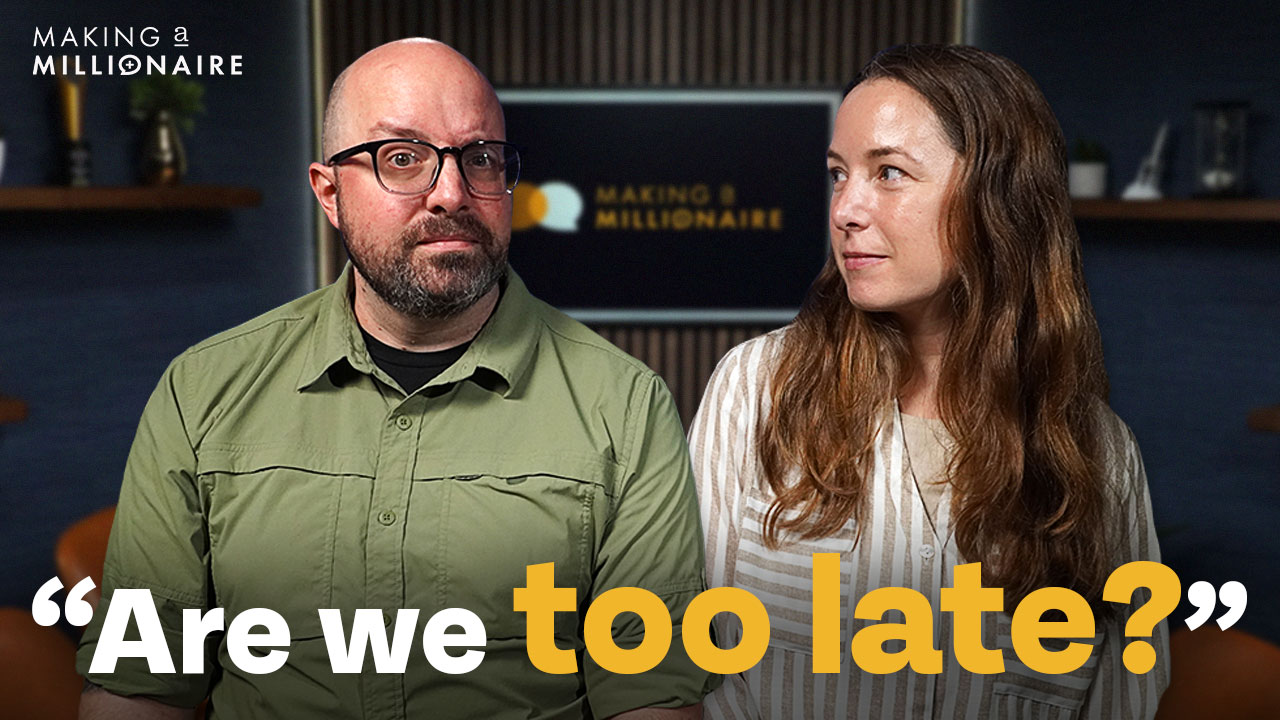Yeah, so speaking of retirement success, we’re kicking it off with a question from Mark on just that. He says, “I used the historical simulations of retirement that you’ve mentioned, and 100% stocks always had better ‘success rates’ than diversifying into cash and bonds. If that’s true, why is diversification safer?”
Yeah, you know, Mark, this is an interesting question we get a lot. So, if you’ve played with any sort of historical simulations, Monte Carlo analysis, or even if you look at the Trinity study, a lot of times it will show that all-equity portfolios have higher probabilities of success or higher return metrics than diversified portfolios. So, the question is, why then do we diversify? Brian, I think there are a few reasons. The first is pretty obvious and pretty intuitive. We believe that past performance does not suggest future results, right? So, because equities have always been the top-performing asset class, and most people, when they do this, they use a singular asset class, they look at the S&P 500, they say, “Oh, well, I noticed that did the best, I’m going to keep using that moving forward.” We don’t know for sure that equities in general over a specified time period or specifically like the S&P 500 will be the top-performing asset class. So, that’s kind of the first thing, is that we don’t know for sure that what has worked in the past 100% will be the exact right answer in the future.
But I think the reason we really diversify is more twofold. One, we do believe modern portfolio theory to be true, that if I have a basket of a bunch of different risky assets and I combine risky assets into a single portfolio, even though I’m adding in riskier pieces, I can actually decrease the overall risk of the total portfolio. So, adding risky assets actually decreases the risk. So, diversification is less of a return metric, it’s less of a return enhancer, and more of a risk mitigator. Because I think the third thing, and this is what I’ll be curious to hear you weigh in on, Brian, is that we know that when it comes to personal finance, when it comes to making financial decisions, 80% of it’s behavioral. And so, one of the things that we have to do as investors is we have to make sure we always curb the two-sided coin of behavior, which is fear and greed. And I think diversification can help on both sides of that coin.
Yeah, this is definitely in the columns of “get wealthy” behaviors versus “stay wealthy” behaviors. And I think anybody who watches the show long enough knows we love equities, we love index funds, so that’s not surprising. But it gets into what happens when you create your success and now you’re worried about, as you alluded to, behavioral traps. I mean, we are very emotional herd animals. It is not uncommon, if you look at all the research on the stock market, especially like the S&P 500, it gets a rate of return north of 10% depending upon which timeframe you look at. But then when you look at actual investor returns, typically it’s like less than bonds. And you’re like, “How is that possible?” All you have to do is set it, forget it, and hold it. And then you realize, “Oh, it’s because…” And think about all your friends, your family, your relatives, or even maybe yourself during all the big downturns of the dot bubble, the Great Recession. Did you ever think about just getting out or pulling the trigger of just getting comfort by going to the sidelines? A lot of people do it. They don’t want to admit it because they only tell you about their wins at the cocktail parties. They never tell you about all the losses. So, the behavioral traps are a legitimate trap.
And let’s talk about why this also comes into play for the people with high risk tolerances. Look, there’s a lot of entrepreneurs, there’s a lot of investors, developers, others that say, “I can handle the additional risk. So, you don’t have to worry about me getting this from an emotional standpoint, making a bad decision.” I’m like, “Well, there’s also a risk you run, which is called risk capacity.” And let me bring some math into this too. A lot of you guys probably recognize when the market loses 20%, and there’s this weird mathematical thing that happens. To replace the 20% you lost, you actually have to make 25% to get back to the exact same point. Well, then if you expand that to if you have a portfolio that loses 50%, to get back to where you started from, you actually have to make a rate of return of 100%. So, now apply this. If we had a performance of even an outsize performance of like 12% a year, if you lose 20% and you have to make 25%, it might take you two years to get back to where you were. If you’ve diversified or you have cash, like we talk about the 18 to 24 months for retirees, you’re going to be able to survive that period of volatility because you diversified, you had liquidity, you’re going to be okay. But if you’re the cowboy or cowgirl who went out there and rode all the way to the equities, and you think about the Great Recession where there were moments in time where the market was down 50%, if you did the same exercise, it might be 6-8 years before you actually had recovered. So now you run into this sequence of returns risk, where you might be pulling out larger chunks because when you retire, you actually will be consuming your assets. A lot of times, you’ll need to live off this. And if the timing, even if you have the risk tolerance to never sell, the timing of the need will force you to do it, even when it’s not the right time.
And then here’s the other thing, and Bo alluded to this, don’t assume… Look, and I love because I talk about the law of accelerating returns and how things are going to be better, but there’s no guarantee. Historic returns are not guarantees. And this is something I had to talk to clients about recently too, is that they tell me bonds are horrible, I don’t want any bonds in my portfolio. And I’m like, “Be careful judging an asset class by the historical performance of the last 10 years.” Because I don’t know if you’ve been paying attention, interest rates were way up, and anybody who knows anything about how you invest in bonds and so forth, when interest rates go down like has been alluded to by the Federal Reserve as soon as even March of this year, there’s that’s going to create a tailwind to the back. They not only do you get the return that’s in the bonds, but you also, as bond yields go down on what’s in the market in the future, if yours is higher, there will be a premium. So, you might actually end up making a better rate of return. So, pay attention and understand that just because what happened 3 years ago, 5 years ago, the asset classes might perform differently than what you’re thinking. Love it.














